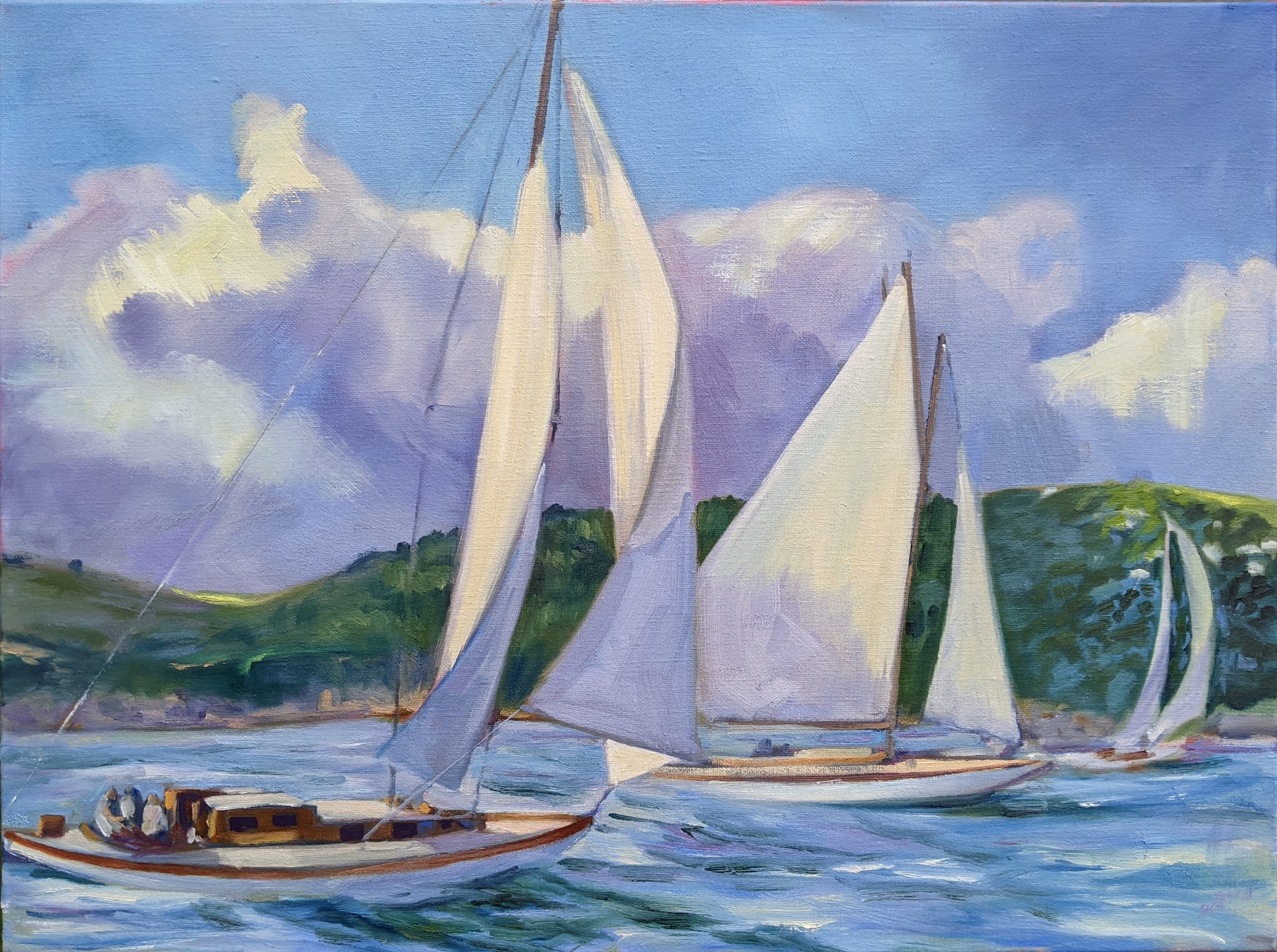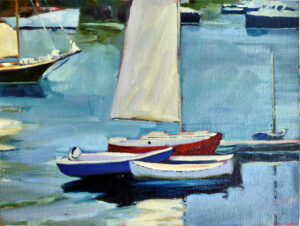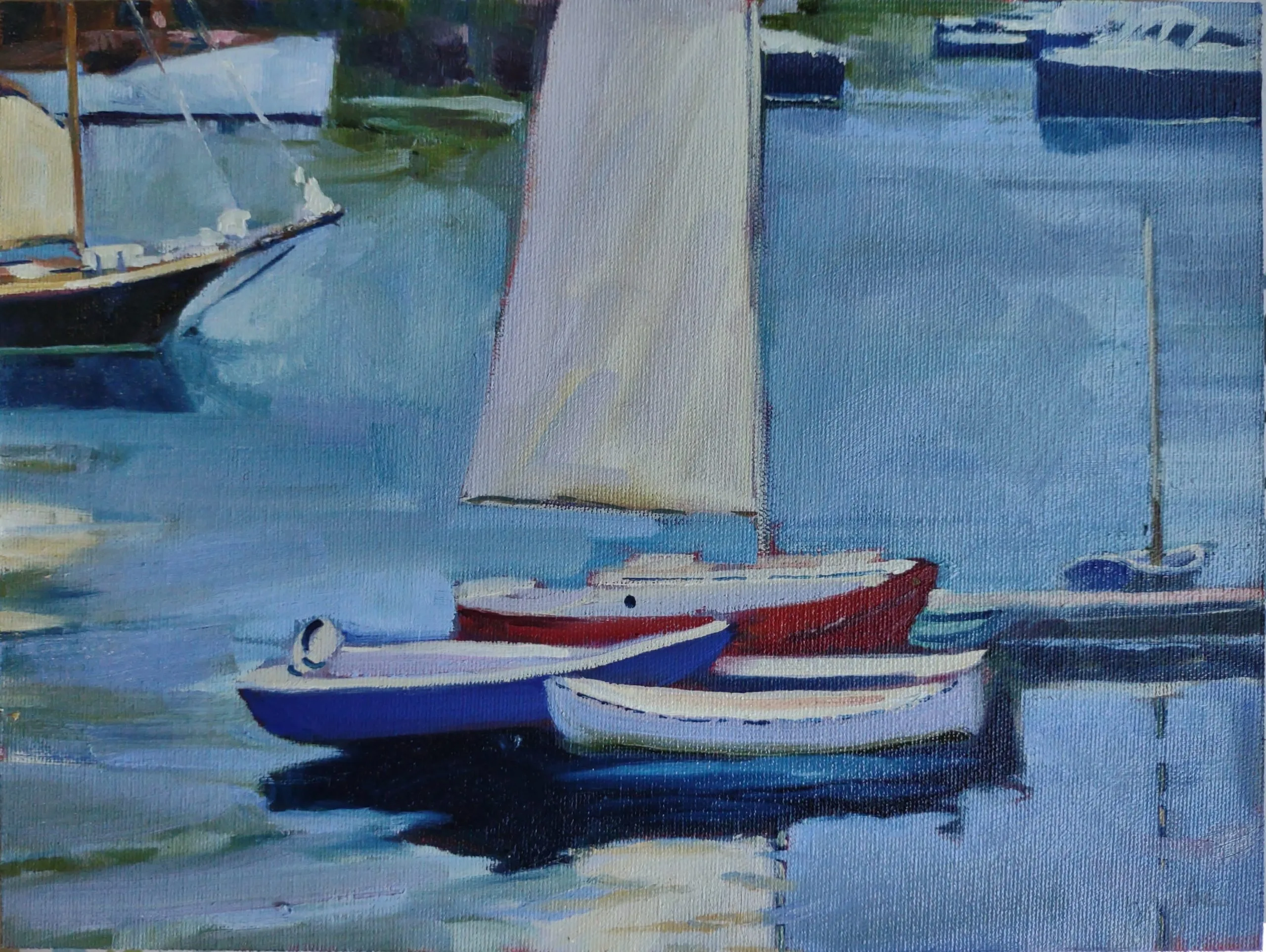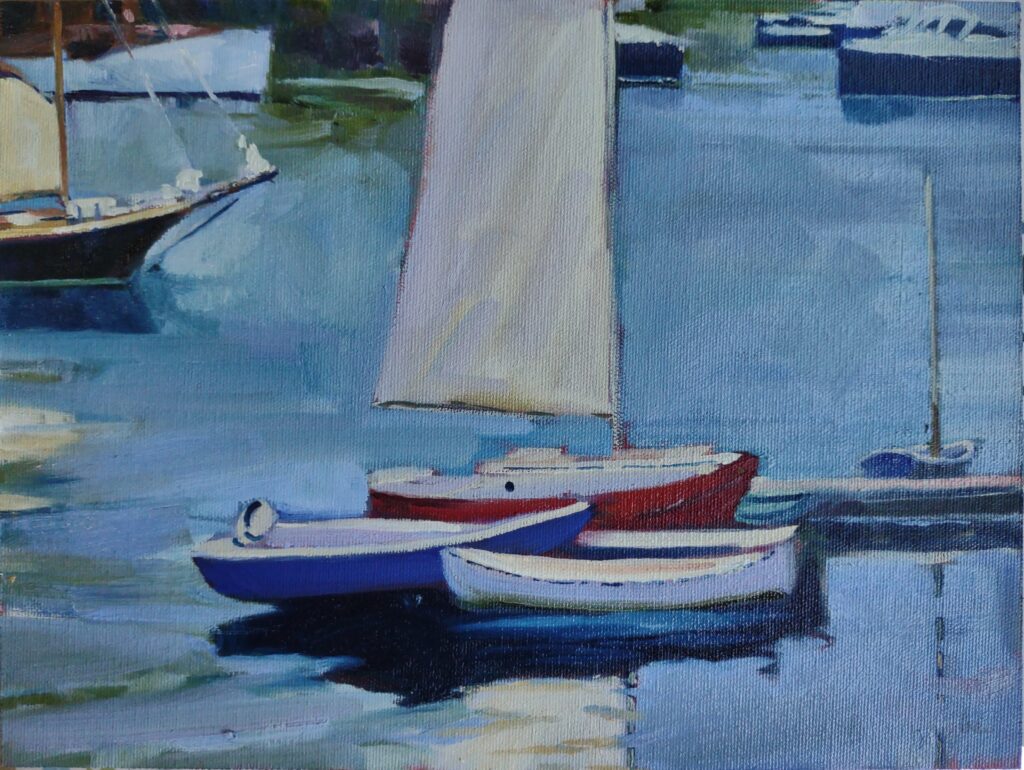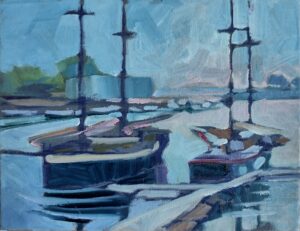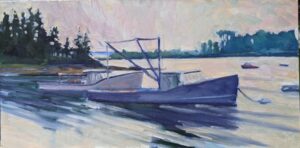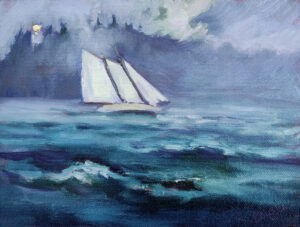We’ve been hiking Beech Hill for so many years that you’d think our feet could navigate on their own. Apparently, that’s not true. On a glorious day in mid-April, my husband stepped wrong and wrenched his back. That has meant pain for him and small inconveniences for me. For one thing, he keeps our pace. Without him, I’m just ambling along listening to birdsong.
Doug also carries paintings down from their second-story storage unit. I’m no good at lifting. But eventually I got it done, and I’m happy with the results.
As I unwrapped the work, I found myself saying over and over, “this is my favorite painting.” That’s a great thing, because it means that, right now, I like my own work. Serious painters know that this isn’t always the case. We can get very angsty about our painting at times.
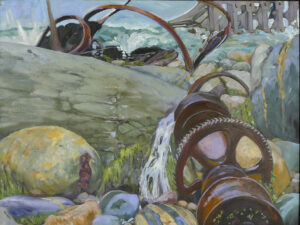
Plein air is where my heart is
Most of the work in this show is plein air. That’s no surprise, since plein air immerses both the artist and viewer into the spirit of the place it was painted.
“My clients don’t care whether I painted it en plein air or not,” a friend once observed. I’m not sure that’s true. Plein air feels different than studio painting, since it involves fast analysis of light, shadows, texture and color. I’m not dissing the studio painting; I’ve done plenty of them. But for the client who loves the outdoors, who wants to sit in that sweet spot between art and nature, plein air is going to resonate more strongly.
The best of plein air should carry a whiff of the painting experience. There is a vast difference between painting ferns at Paul Smith’s College, NY, and painting shadows in Sedona, AZ.
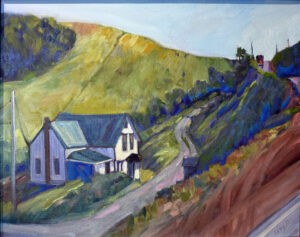
This year’s show is almost completely Maine. The exceptions are a seascape from Parrsboro, NS and a harbor scene from Iona in Scotland. There are no paintings from Patagonia, Alaska, Texas, New Mexico, or Arizona, as much fun as I’ve loved painting in those places. I’ll get back to them later.
Place and painting have a complicated relationship. You don’t need to go far to find a beautiful subject. For most of us, there’s a painting waiting right outside the back door. (If you live where there’s not, I’d suggest you move for your mental health.) On the other hand, painting in other places changes your perception. If you’re any good, the light, shapes, rocks, trees, and houses will all be different.
For years I’ve pondered the relationship between God and man as expressed in the environment. (I once did a whole body of work on the subject, in fact.) There’s an old foundation in Erickson Field Preserve. It was a very small farmhouse; its barn foundation is on the other side. At this point the trail is the old farm track, and there are three small meadows strung along it like tiny pearls. In them are a few old domesticated apple trees and their wild descendants in the woods. There are lilacs, lily-of-the-valley, goutweed, narcissus, daylilies and more still thriving long after their humans have departed. I need to paint this story eventually.
But for now, I’m a gallerist. This weekend is also the first annual Rockport Donut Festival. Stop by on your way past.
Next weekend, unfortunately, I’ll be closed on Saturday and Tuesday. I’m traveling to Rochester for a memorial service and stopping on my way back to nail down the sites for my Berkshires workshop in August.
Carol L. Douglas Studio and Gallery
394 Commercial Street
Rockport, ME 04856
585-201-1558 Sunday: closed
Monday: closed
Tuesday: Noon-5
Wednesday: Noon-5
Thursday: Noon-5
Friday: Noon-5
Saturday: Noon-5
Or by appointment.
My 2024 workshops:
- Painting in Paradise: Rockport, ME, July 8-12, 2024.
- Sea & Sky at Schoodic, August 4-9, 2024.
- Find your authentic voice in plein air: Berkshires, August 12-16, 2024.
- Art and Adventure at Sea: Paint Aboard Schooner American Eagle, September 15-19, 2024.
- Immersive In-Person Workshop: Rockport, ME, October 7-11, 2024.

